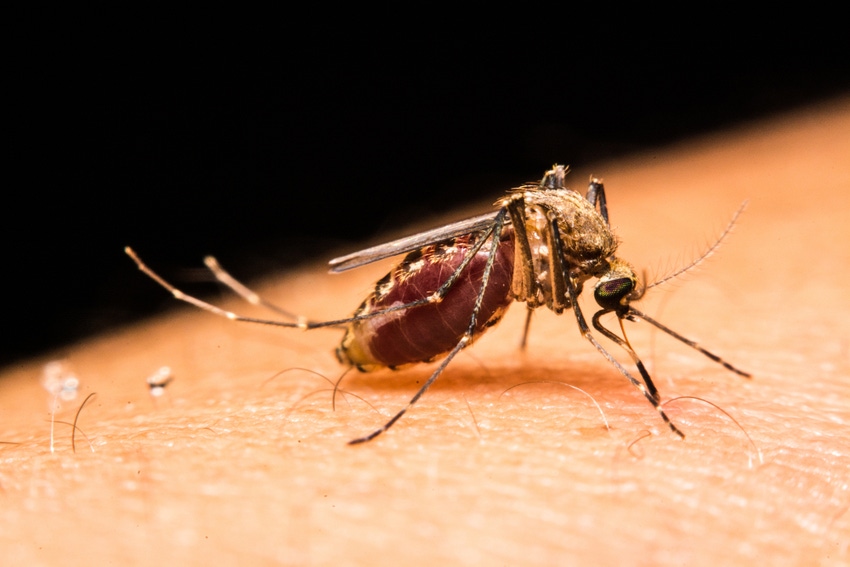July 5, 2018

A little over three weeks after a consortium of public health officials gathered in the Texas Rio Grande Valley to discuss strategies for controlling mosquito-borne diseases, like Zika virus and West Nile Virus, rain-soaked South Texas is now experiencing a full-fledge explosion of mosquito populations, spawning quick action by city and county governments to step up vector control efforts to slow and hopefully control the invasion.
Local government mosquito control teams have been active in elevating spray schedules in major cities like Houston, Corpus Christi, McAllen and Brownsville, while state and local public health officials have initiated public awareness and education campaigns to encourage home and business owners to take an active role in addressing standing water caused by torrential rains that covered most of the Texas coast, June 17-23. Those rains were responsible for dropping as much as 33 inches of rain in isolated areas, which caused extensive flooding that closed roads and displaced residents in multiple communities, especially in the Lower Rio Grande Valley.
Types of mosquitoes
Coastal regions of Texas have always suffered from heavy infestations of mosquitoes during times of heavy rain, and most communities have been active in spraying for mosquitoes during the peak of mosquito season. But understanding the mosquito is required to develop effective strategies to control them. For instance, there are many types of mosquitoes, and each variety may be responsible for carrying a particular type of disease.
"We’re trying to look at all types of mosquitoes out there," said Texas Department of State Health Services (DSHS) regional medical director for South Texas Dr. Emilie Prot. "We’re trying to get good data in order to look at the types of mosquitoes we have here in our many counties in the region and when they pose the greatest risks."
Mosquito risks
Deep South Texas is particularly prone to mosquito-borne risks. In 2017, for example, Cameron County, on the very tip of Texas, reported 14 confirmed cases of Zika Virus, and 26 cases of Zika the year before. Neighboring Hidalgo County reported eight confirmed cases of Zika in 2017 and six cases in 2016. Statistical data for the number of Zika and West Nile virus cases reported by the county this year so far, is not yet available, but health officials warn, following times of heavy rain and flooding, the number of cases generally spike.
Farmers, ranchers, along with agricultural operations statewide, are also at risk from mosquito problems. Farm workers and others who must work outdoors run a higher risk of being bitten by insects, Also, horses, mules and donkeys, are particularly at risk to exposure of Equine West Nile Virus.
In 2017, only 18 horse and mules had contracted the disease, but in 2016 that number peaked at 138 animals; 380 nationwide.
State health officials say Zika and West Nile viruses are not the only diseases spread by mosquitos. The Center for Disease Control in Atlanta warns other known diseases in Texas than can be spread by airborne vector include Dengue Fever, Chikungunya Virus, encephalitis, malaria, and yellow fever, all of which can be carried by mosquitoes under the right conditions.
Tools
While vector-spraying to reduce mosquito populations is one tool in the public health tool shed, state health officials say it isn't an end-all solution that will solve the problems associated with mosquitoes.
"We can’t spray our way out of this," warned Hidalgo County Health and Human Services Administrator Eduardo Olivares. "We need to educate the homeowner and our communities."
Olivares said an aggressive policy of preventing and correcting standing water is necessary, along with keeping lawns and pastures well maintained and mowed regularly and free of debris, especially of items that could collect water.
DSHA Commissioner Dr. John Hellerstedt agrees.
"Diseases like Zika and West Nile remain threats in Texas and we need everyone to do their part to protect themselves, their families and their communities," said Hellerstedt. "These are simple steps, and if people take them consistently, they will go a long way toward reducing the number of cases of either disease transmitted in Texas."
Stop the spread
He said to stop the spread of mosquito-borne diseases Texans should:
Use EPA-approved insect repellent each time they go outside.
Cover exposed skin with long pants and long-sleeved shirts whenever possible.
Use air conditioning or window and door screens that are in good repair to keep mosquitoes out.
Limit outdoor activities during peak mosquito times.
Remove standing water in and around homes, including in trash cans, toys, tires, flower pots and any other containers so mosquitoes can’t lay their eggs.
Use a larvicide in water that can’t be drained to keep mosquitoes from developing.
Olivares says in Hidalgo County, the Health and Human Services' Infectious Disease Surveillance Program conducts active, passive, sentinel, and syndromic surveillance investigations on notifiable conditions with local medical providers, hospitals, schools, and universities, and other public health stakeholders. Surveillance efforts consist of a systematic collection, analysis and interpretation of health-related data needed for the planning, implementation, and evaluation of public health practice.
Surveillance serves as an early warning system for impending public health emergencies at the local, state, national, & international level. It also monitors the impact of an intervention, and tracks progress towards health specified goals, helping to clarify epidemiology of health problems to allow priorities to be set and to inform public health policy and strategies each year.
Solving threats
In a recent Texas A&M AgriLife Research sponsored event in the Valley, a collaboration of agencies including Texas AgriLife and the University of Texas Medical Branch at Galveston, have joined forces with other state and local agencies to solve threats from the pests as members of the Western Gulf Center of Excellence for Vector-Borne Diseases.
The consortium has received $10 million from the Centers for Disease Control and Prevention over five years to carry out applied research and implement communities of practice across Texas to better respond to mosquito and tick-borne diseases.
You May Also Like




